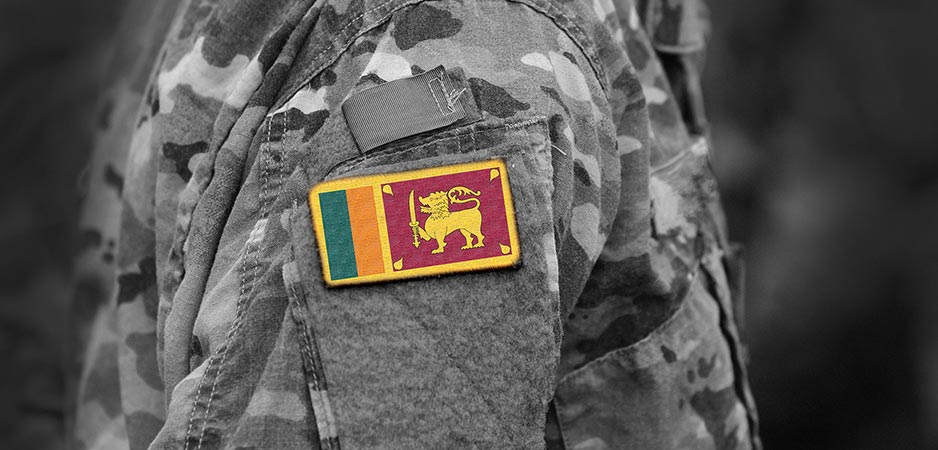In March 2015, the unexpected newly elected president of Sri Lanka, Maithripala Sirisena, stated that the national anthem could be sung in Tamil at official and institutional events. For anyone alien to life on the teardrop island, this announcement may have come as a surprise since, after all, Tamil and Sinhala are the two official languages of the country. Yet the reality in Sri Lanka has been radically different.
Remembering the Easter Sunday Victims in the Shadow of COVID-19
Sinhala and Tamil are the national languages of Sri Lanka, according to Chapter IV of the 1978 constitution — which was amended in 1987 to give Tamil the status of an official language that was denied nine years earlier — and English was declared the link language. Sinhala and Tamil are genetically unrelated languages. The former belongs to the Indo-Aryan family and is spoken by about 74% of the population, namely native and second-language speakers. Tamil, a Dravidian language, is spoken by about 18% of citizens on the island, mainly consisting of Tamil people and Muslims.
But Sinhala and Tamil are more than just two languages in Sri Lanka. As with other parts of the world, languages are social tools that allow us to communicate, but they can also be vehicles of power frequently used as ideological weapons of oppression.
Anthems and flags are probably the most agglutinative semiotic symbols that reaffirm a nation’s identity, setting the boundaries against external forces but also as potential tools for unity or division, depending on how they are exploited politically. National anthems construct a narrative of belonging that becomes unavoidably linked to concepts like power and resistance through history. But exactly for all these reasons, anthems (and flags) can be instrumentalized with a clear symbolic meaning.
The Civil War
The Sri Lankan Civil War that took place between 1983 and 2009 had, among many causes, linguistic roots. The Sinhala Only Act of 1956 — which stripped Tamil of its official status as a language and instead gave this right to Sinhala to replace English — was one of the triggers of the conflict. While the Sinhalese people claimed that the act was a measure to distance themselves from their English colonizers (via demotion of their language) and reassess their recently acquired independence as a nation, the Tamils felt the act was a sign to subjugate them — with all the economic and education implications it entailed — and became of the main reasons to justify their demand for self-determination.
After the war ended in 2009, there was an unofficial ban imposed by President Mahinda Rajapaksa that prevented the Tamil version of the anthem — in use since 1951 — from being sung at official institutions. The defeat of the Tamil Tiger rebels in the conflict led to the progressive refusal of the Tamil version of the anthem, even at institutional events that took place in the Tamil-speaking region. On many occasions, the measure was even imposed by the security forces as another example of what has been called the “Sinhalization” of Sri Lanka.
The post-war years have witnessed the spread of racist rhetoric during the presidencies of Rajapaksa and Sirisena. Intermittent communal violence, extreme nationalist propaganda and discrimination against minorities have continued.
Wounds Have Not Healed
In a 2017 report, my colleague and I examined the discourse of transitional justice on the island. We analyzed the reactions of social media users to the measures taken by President Sirisena on allowing the national anthem to be sung in Tamil. At the time, the new government came to power with a promise to foster reconciliation, ensure accountability and improve human rights in Sri Lanka.
In our trilingual corpus (Sinhala, Tamil and English), most of the data analyzed showed the polarization of a Sri Lankan society whose wounds were not yet healed. Whereas a sector of the population welcomed Sirisena’s decision as an attempt to promote reconciliation toward minorities and held hopes for a new style of politics, others saw in the gesture a sign of weakness of a president whose first important measure was taking a bow to the Tamils.
Paradoxically, most of the arguments both for and against the measure were the same, with the actors involved being the only difference. Thus, the supporters of the bilingual performance cited similar situations in Canada and South Africa, whereas those against it provided the example of India as a role model to follow, with only one out of its 22 official languages chosen to sing the national anthem.
A New President
In Sri Lanka, the last election in November 2019 saw how a new leader but an old political force and name could rise to power. Gotabaya Rajapaksa, the former secretary to the Ministry of Defense under the government led by his brother, became president. Right after the electoral results were made public, the Tamil-language street signs of some roads in Colombo, the capital city, were attacked and removed. These kinds of acts, only attributable to a minority group, are meaningful when it comes to looking at the Tamil language within Sri Lankan identity.
In January 2020, President Rajapaksa announced that the anthem would only be sung in Sinhala during celebrations for independence day on February 4, going back to the pre-Sirisena days and reliving old ghosts from a forgettable past. The measure — which was understood as a statement of intent of a president who claimed he wanted to be the leader of all Sri Lankans — was seen as a symbol of discrimination toward the Tamil minority who had been excluded from taking part in one of the country’s main signs of identity. Activists and members of civil society reacted by singing the anthem in Tamil in a video that circulated on social media platforms as a gesture of support toward their fellow citizens, as well as the rejection of the discriminatory measure taken by the new government.
Any ethnic group’s greatest identification is its language, and the rejection of minority languages has become a tool to marginalize their cultures and traditions. In many cases, they are also used as proxies for ethnoreligious discrimination and the imposition of the supremacy of the majority via language. The ideas of unity, reconciliation and coexistence must inevitably consider a Sri Lankan identity beyond and solely based on one ethnicity, one religion and one language. Singing the national anthem in both official languages could be a great first step toward it.
*[The Centre for Analysis of the Radical Right (CARR) is a partner institution of Fair Observer.]
The views expressed in this article are the author’s own and do not necessarily reflect Fair Observer’s editorial policy.
Support Fair Observer
We rely on your support for our independence, diversity and quality.
For more than 10 years, Fair Observer has been free, fair and independent. No billionaire owns us, no advertisers control us. We are a reader-supported nonprofit. Unlike many other publications, we keep our content free for readers regardless of where they live or whether they can afford to pay. We have no paywalls and no ads.
In the post-truth era of fake news, echo chambers and filter bubbles, we publish a plurality of perspectives from around the world. Anyone can publish with us, but everyone goes through a rigorous editorial process. So, you get fact-checked, well-reasoned content instead of noise.
We publish 2,500+ voices from 90+ countries. We also conduct education and training programs
on subjects ranging from digital media and journalism to writing and critical thinking. This
doesn’t come cheap. Servers, editors, trainers and web developers cost
money.
Please consider supporting us on a regular basis as a recurring donor or a
sustaining member.
Will you support FO’s journalism?
We rely on your support for our independence, diversity and quality.





